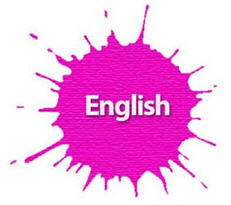How to Teach Personal Pronouns


Intermediate learners will often spend several lessons on topics such as relative pronouns. Some teachers prefer to introduce only one or two relative pronouns at a time and then combine all of them in a final relative pronoun lesson. The outline below follows another method where all five are introduced at the same time but this approach will also take several lessons to complete.
Warm up
Plan a warm up activity based on the materials you want to use later on in class. Asking questions about hobbies, pets, and family members is useful because you can use the responses from students as examples during later stages of the lesson. If you ask “What do you like to do?” and Meg says, “I like to play tennis.” write her answer on the board.
Introduce and Drill Vocabulary
There are five relative pronouns in the English language. They are that, which, who, whom, and whose. Write these words on the board, model the pronunciation for your students, and drill. Unlike most vocabulary words, there are no pictures or definitions that will help your students understand their meaning so the best thing you can do is explain how to use these words.
Introduce Structure
Using the responses from the warm up, show students how to use these new vocabulary words. Our sample response could easily become “Meg is a girl who likes to play tennis.” or “Meg is a student that likes to play tennis.” It is important to demonstrate that that can be used to refer to both people and things while who and whom refer only to people, which refers only to things, and whose is the only one of the five that reflects possession. If your students have difficulty, focus the first lesson only on that and who.
Practice Relative Pronouns
For the first practice activity, have a worksheet where students circle the correct relative pronoun for each sentence. There should only be two options per sentence and only one correct answer. The activity should not take long to complete but use the time correcting answers as speaking practice for your students. Ask for volunteers to provide the correct answer and ask for translations of the sentences to ensure that students understand them.
Practice Relative Pronouns More
On the same worksheet, you can include a pair activity. You will need eight sentences with relative pronouns where Student A has the first half of four sentences and the second half of four sentences while student B has the opposite halves. Student A goes first by reading the first half sentence while Student B searches his endings to find the one that matches and dictates it to Student A. When Student A has completed all his sentences, students should switch roles. It will be easier for students to complete sentences if there is no ambiguity as to which endings go with which beginnings. You can ensure that this is the case by using sentences such as I love going to zoos that have pandas. In this example the words zoo and panda should help students place them together.
Produce
For a production exercise, have students write the names of five people on their worksheet (celebrities, for example). Have students work in pairs and take turns describing their people using relative pronoun sentences until all the names they have written down have been guessed. Using another teacher as an example, give students some easy model sentences such as “She is a woman who teaches History. She is the teacher that drives a red car.” Another activity students may enjoy is a board game. Have students work in groups of three to four taking turns rolling the dice and moving. For every space on the board have a picture so that each student must make a relative pronoun sentence on his turn. Both of these activities require your students to understand the material quite well so be sure to do sufficient practice exercises before moving on to this stage of the lesson. Especially in large classes, it will be impossible to correct every mistake in activities such as these.
Review
As a review or warm up activity, play fruit basket. Have students stand in a circle surrounded by a ring of chairs where there is one less chair than students. The student in the middle has to make a relative pronoun sentence and every student it applies to must then scramble to change chairs leaving a new student in the middle to create the next sentence. If certain students have not moved in a long time, mix things up with a sentence such as “I am a student who studies English.”
Relative pronouns can be confusing for students to grasp as they are part of a more complex sentence structure. Students will see relative pronouns more and more as they progress through their English studies so please dedicate plenty of time to this topic.
View relative pronoun worksheet 1 and Relative Pronoun Worksheet 2on BusyTeacher.org.
How do you teach relative pronouns? Please share your ideas in the comments below!